

Exercises:
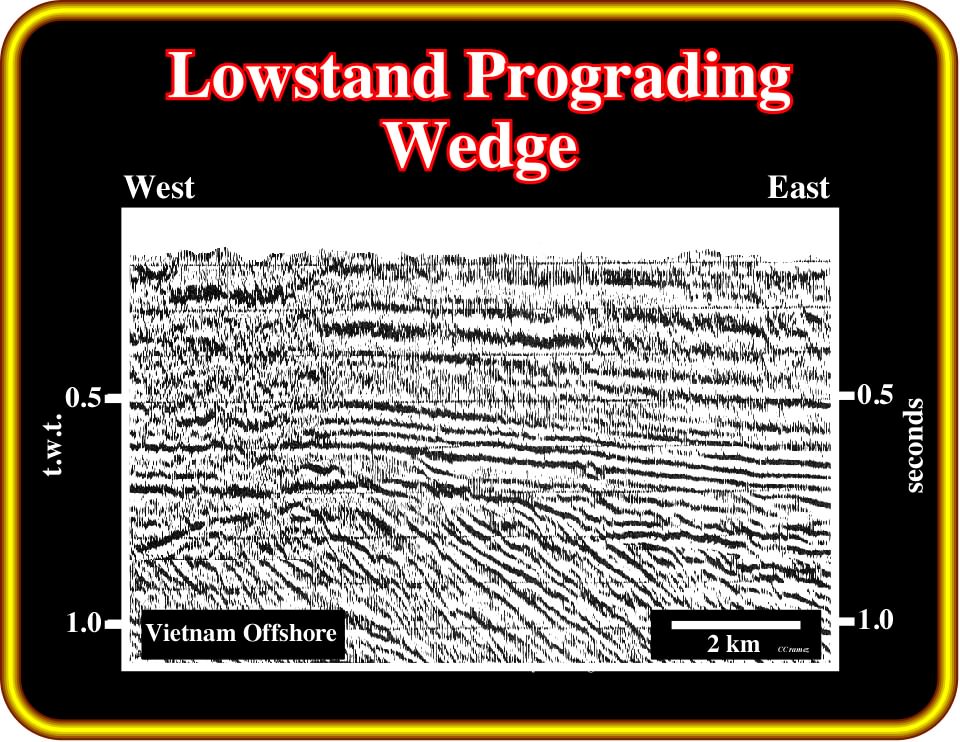
Plate 419 - After recognizing the reflection terminations and the major seismic surfaces, propose a sequential interpretation of the seismic intervals overlying the tectonically enhanced unconformity. Then compare your interpretation with that proposed in next plate.
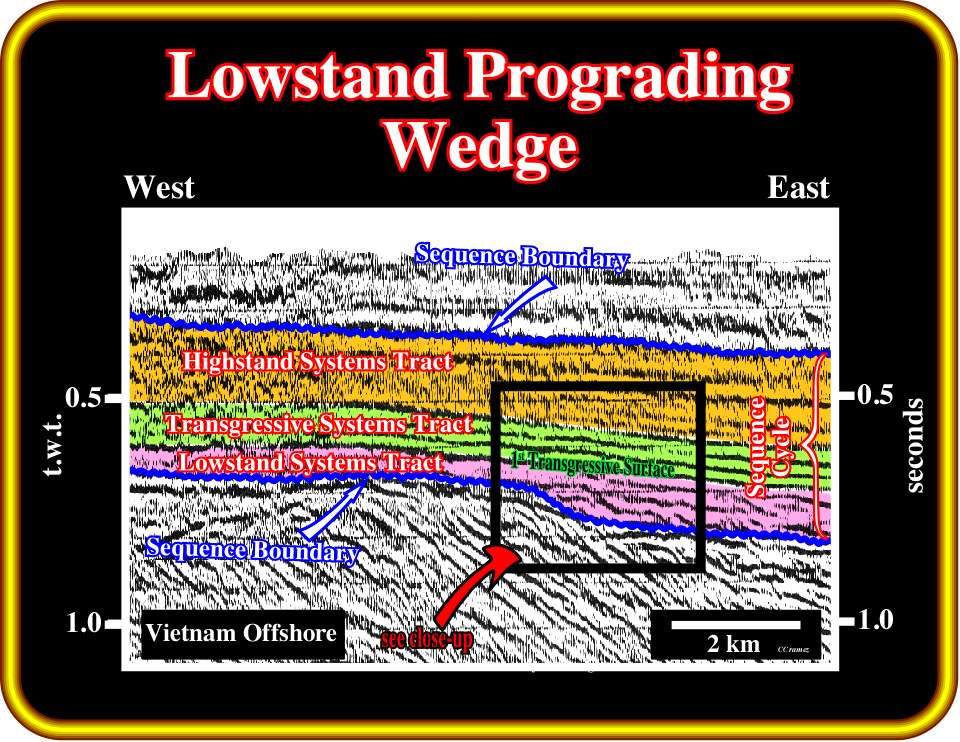
Plate 420 - This tentative sequential interpretation (offshore Vietnam) is the most likely solution of the previous exercise. The tectonically enhanced unconformity is easily recognized due to the obvious truncation seismic surface. Overlying this erosional surface, a complex progradational interval, limited at the top by a transgressive surface, can be interpreted, in a first phase, as a lowstand systems tract. The green isopachous interval, deposited above the toplap surface (top of the lowstand systems tract) is considered as a transgressive systems tract, which in turn is overlain by a slightly progradational interval, considered as a highstand systems tract. A speculative upper sequence boundary ends the sequence-cycle. A close-up of the lowstand systems tract shows a more complicated geometry as you can see in the next plate.
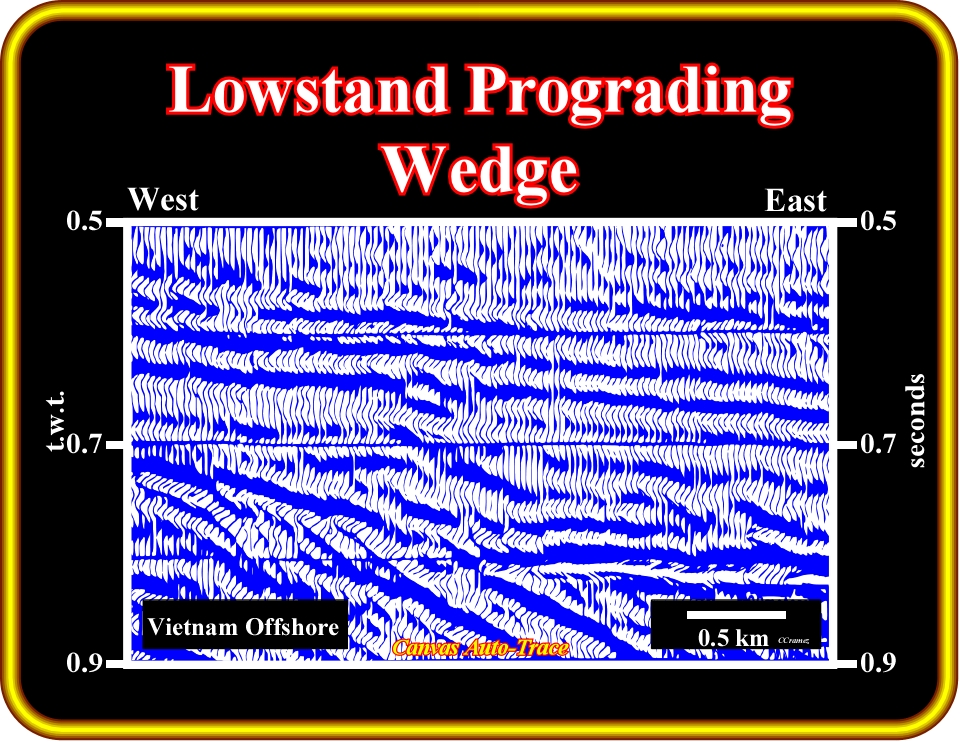
Plate 421- On this close-up, underline all reflections terminations. Then, pick the most likely sequence-cycle boundaries. How many systems tracts can be recognized? Are there one or two lowstand prograding wedges? Criticize your interpretation using the solution proposed in the next plate.

Plate 422- On this tentative interpretation, two lowstand prograding wedges are recognized. Actually, two onlap geometrical relationships, highlighted above by red arrows, strongly suggest a sequence cycle boundary (relative sea level fall) limiting an underlying incomplete sequence represented just by a lowstand prograding wedge.
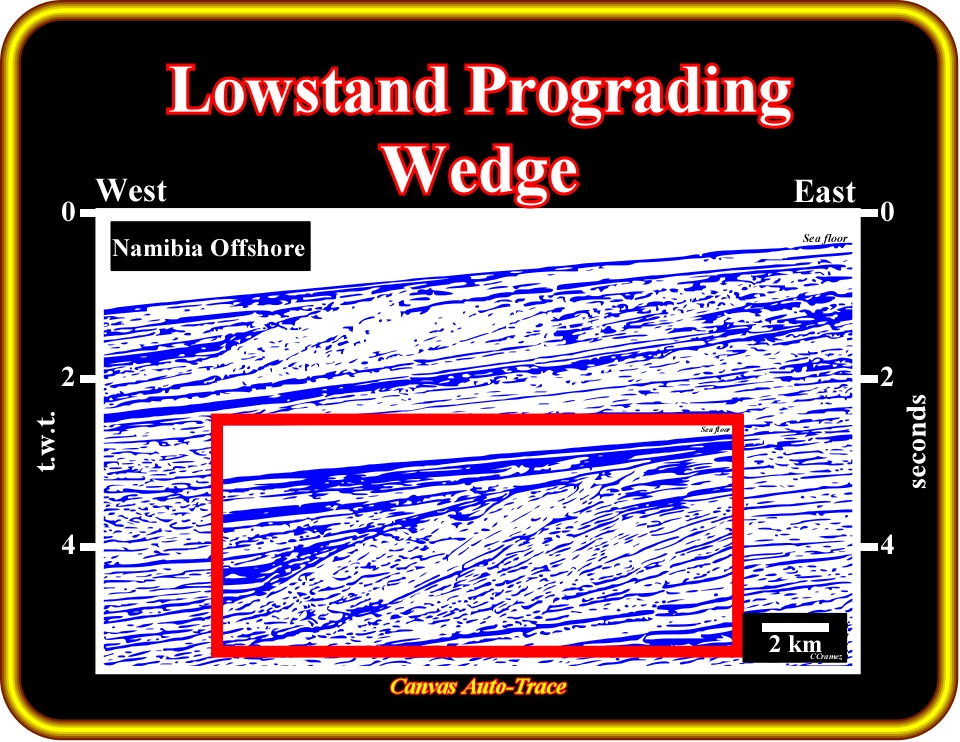
Plate 423 - You have already seen several tentative interpretations of this seismic line (offshore Namibia). So, I guess you are not going to have any problem interpreting it in stratigraphic cycles. Assuming that such cycles are induced by 3rd order eustatic cycles, are they complete or incomplete? What are the predominant systems tracts? Criticize your interpretation using the proposed solution illustrated in next plate.

Plate 424- On this tentative interpretation, the majority of the sequence cycles are incomplete. The transgressive and highstand systems tracts are often missing. Lowstand prograding wedges seem to be the more frequent members of the lowstand systems tracts.

Plate 425 - On this seismic line, from offshore Australia, start to propose a sequential interpretation below 2 seconds. Notice that you are going to recognize a quite particular sequence boundary between a transgressive systems tract and an overlying lowstand prograding wedge. Criticize your interpretation with that proposed in Plate 426.
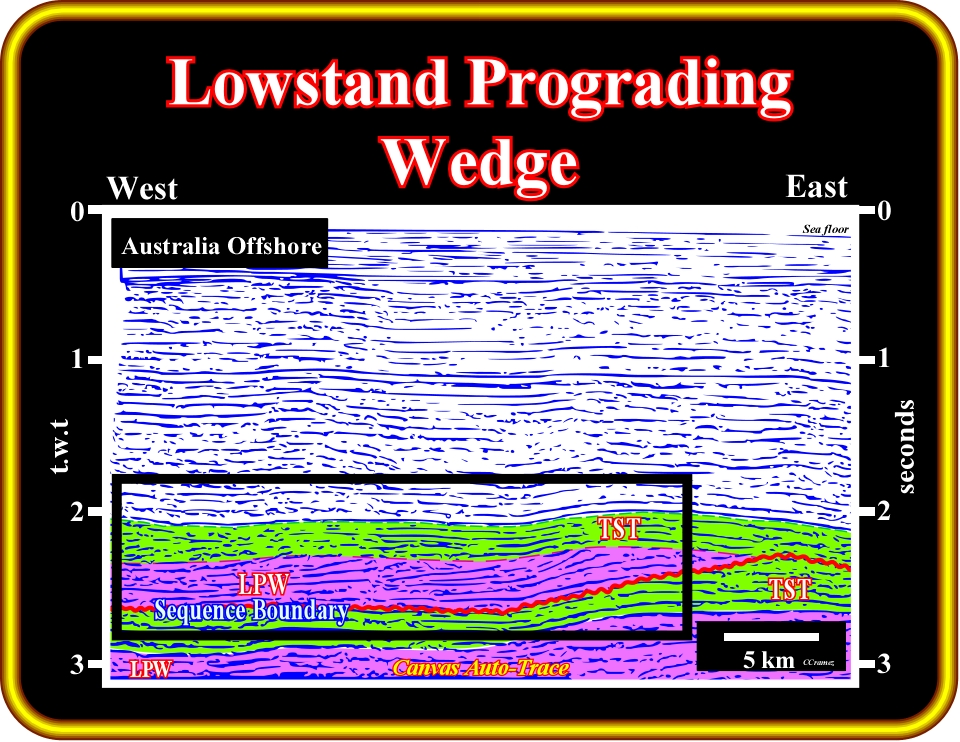
Plate 426- The most likely interpretation of the previous line is roughly the interpretation presented here above, in which a sequence cycle boundary is recognized by the onlap of the lowstand prograding wedge against the transgressive systems tract of the underlying sequence cycle. On the other hand, the lowstand prograding wedge is covered by a transgressive systems tract, which enhanced the toplap surface limiting the top of lowstand geological conditions. The aggradational parallel geometry of the transgressive systems tract strongly contrasts with the forestepping geometry of the lowstand systems tract in spite of the ramp setting of the last.
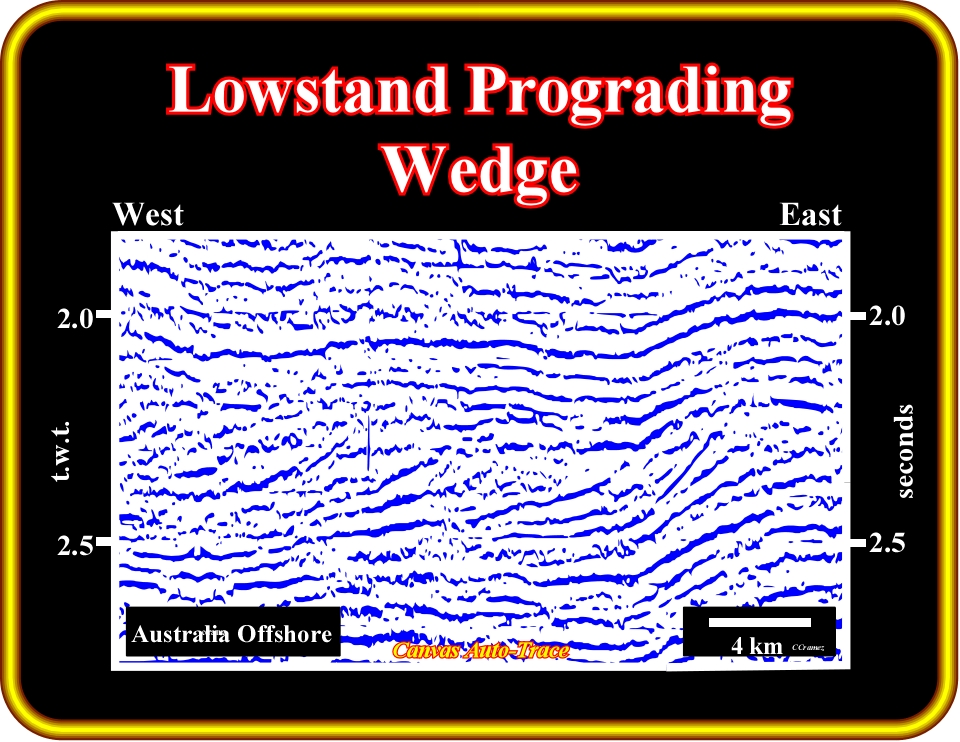
Plate 427- This close-up suggests small sedimentary anomalies at the toe of the progradations of the lowstand prograding wedges. Try to pick such anomalies and propose the most likely facies associated with them. See a tentative solution in next plate.
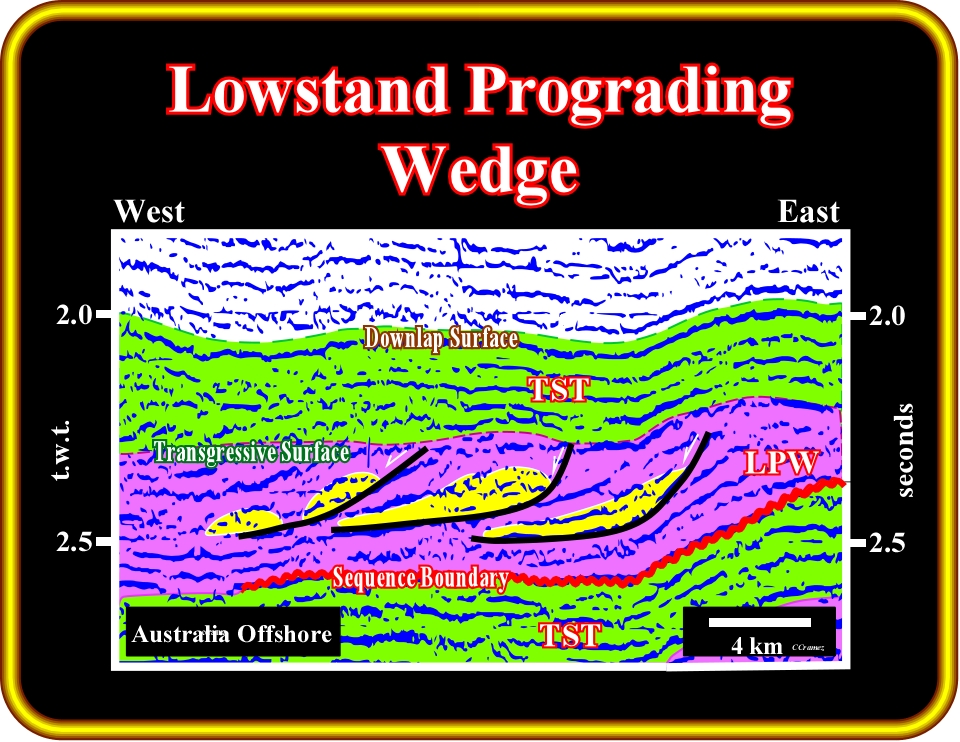
Plate 428- Knowing the geologicalmodel of shingled turbidites that will be described next, a seismic interpreter looking for petroleum reservoirs and non-structural traps can speculate sedimentological anomalies, associated with gravity slumpings, at the toe of the progradations of lowstand prograding wedges as illustrated above. The exploration well drilled on this line found excellent turbiditic sandstone reservoir intervals, which, taking into account the log pattern (see next) seems to correspond to shingled turbidites.
e) Turbidite Deposits Associated with LPW
A) Lowstand Prograding Wedge (LPW) :
- Shingled Turbidites.
B) Slope Fan (SF) :
- Canyon Fill or Slump Blocks ;
- Overbank Deposits ;
- Distal Overbank Mudstones ;
- Channel Sands ;
- Basin Floor Thin Bedded Turbidite.C) Basin Floor Fans (BFF) :
- Sheet Lobe facies ;
- Unamalgamated Turbidites ;
- Amalgamated Turbidites ;
- Channelized Facies ;
- Contourites .
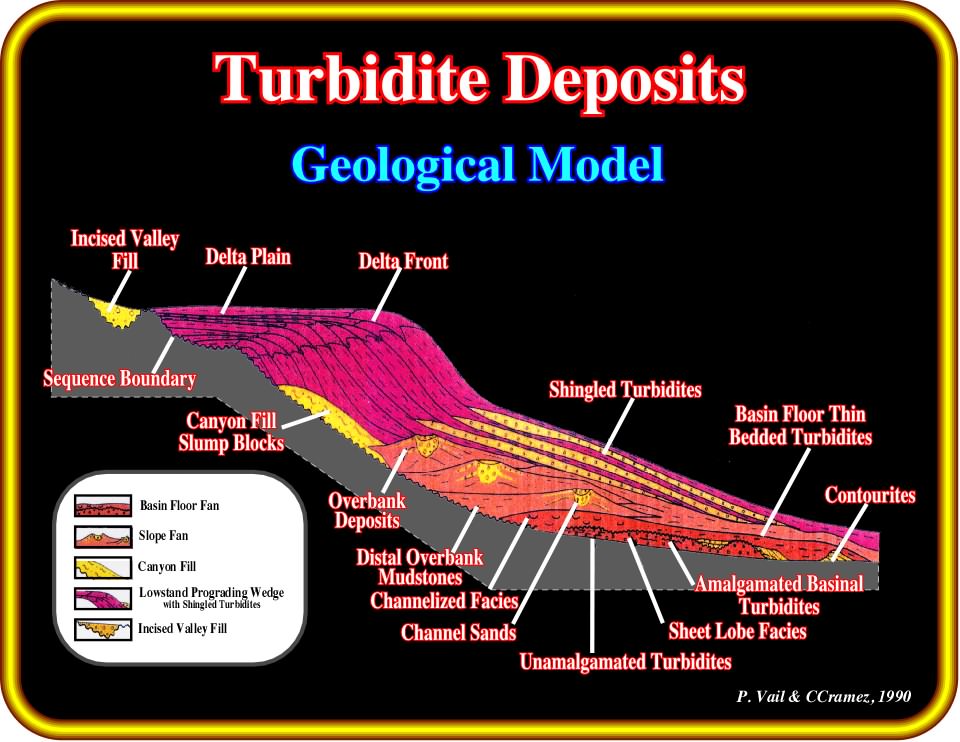
Plate 429- As illustrated on this sketch, several types of turbiditic deposits are associated with lowstand systems tracts. In the lower member, i.e., in a basin floor systems tract, the following turbidite depositional systems can be found: (i) Amalgamated basinal turbidites ; (ii) Unamalgamated turbidites; (iii) Sheet lobe facies, (iv) Channelized facies ; (v) Basin floor thin bedded turbidites and (vi) Contourites. In a slope fan systems tract, one can find: (a) Overbank deposits ; (b) Distal overbank mudstones and (c) Channel sands with associated ; (d) Canyon fills and slump blocks. In the lowstand prograding wedge systems tract, shingled turbidites are often found at the toe of the progradations.
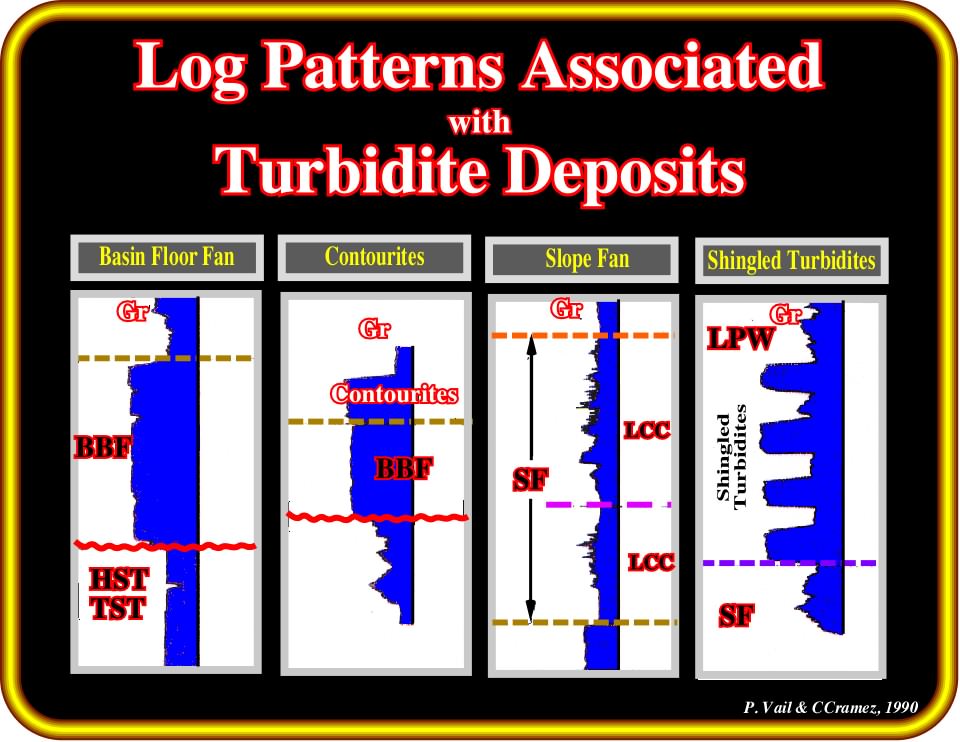
Plate 430- On this sketch the more likely log patterns associated with the lowstand turbidite depositional systems are summarized. The log pattern of the basin floor fan has generally a cylindrical morphology with quite abrupt upper and lower limits. The log pattern of contourites is similar to that of the basin floor fan, but the internal parallel configuration is generally dipping seaward. The log pattern of a slope fan, as said previously, and as illustrated above, is characterized by a stacking of increasing and decreasing patterns with interbedded channelized patterns. The log pattern of the shingled turbidite is characterized by a stacking of cylindrical boxy shaped sandstones separated by significant shaly intervals.
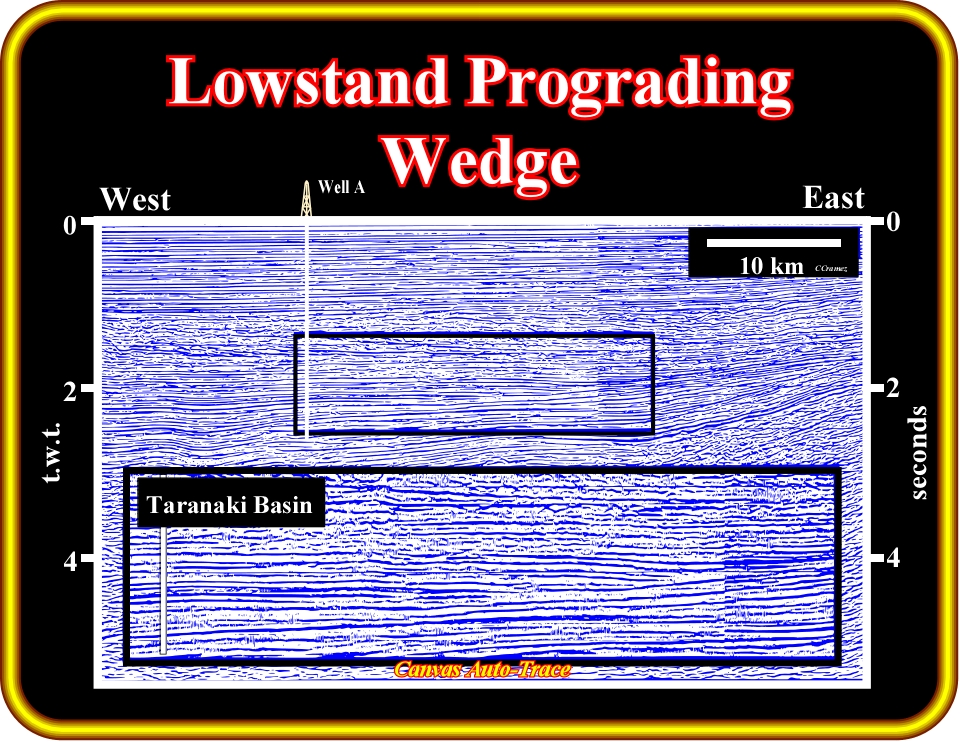
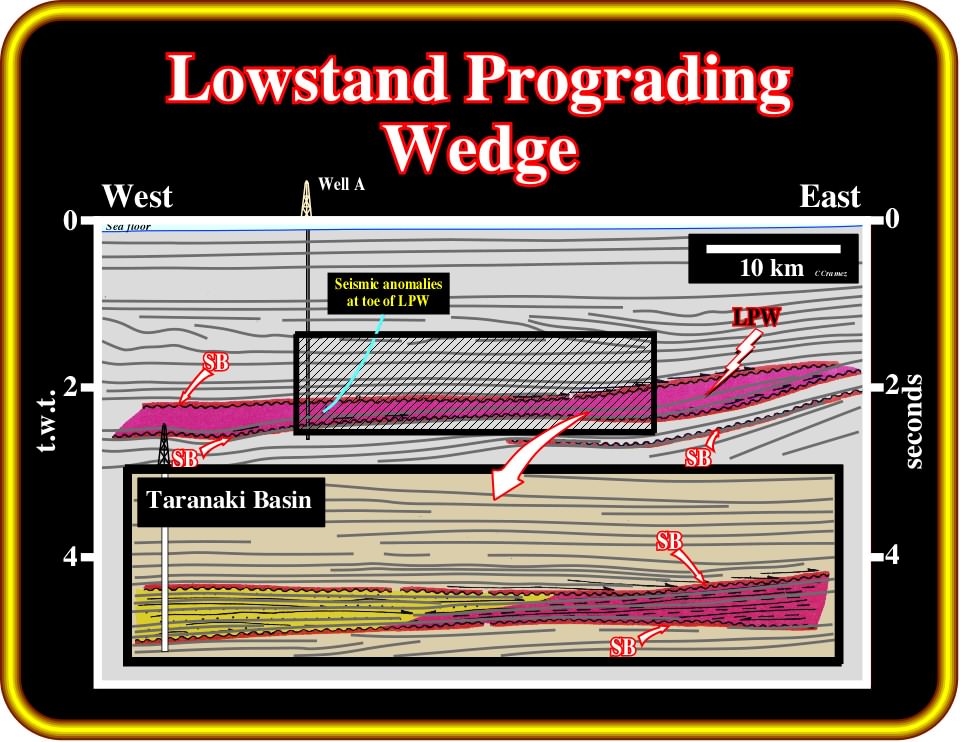
Plate 431 - Taking a look at this first step tentative interpretation of a seismic line from Taranaki basin (New Zealand), it is quite easy to recognize at the toe of progradations (lowstand progradations) sedimentary anomalies, which can be interpreted as shingled turbidites, i.e., potential reservoirs and morphological traps. Such anomalies are more evident in following the close-up, since the reflections terminations are slightly enhanced. The interpretation proposed on the next plate can help you to better recognize such turbidite sedimentary anomalies.
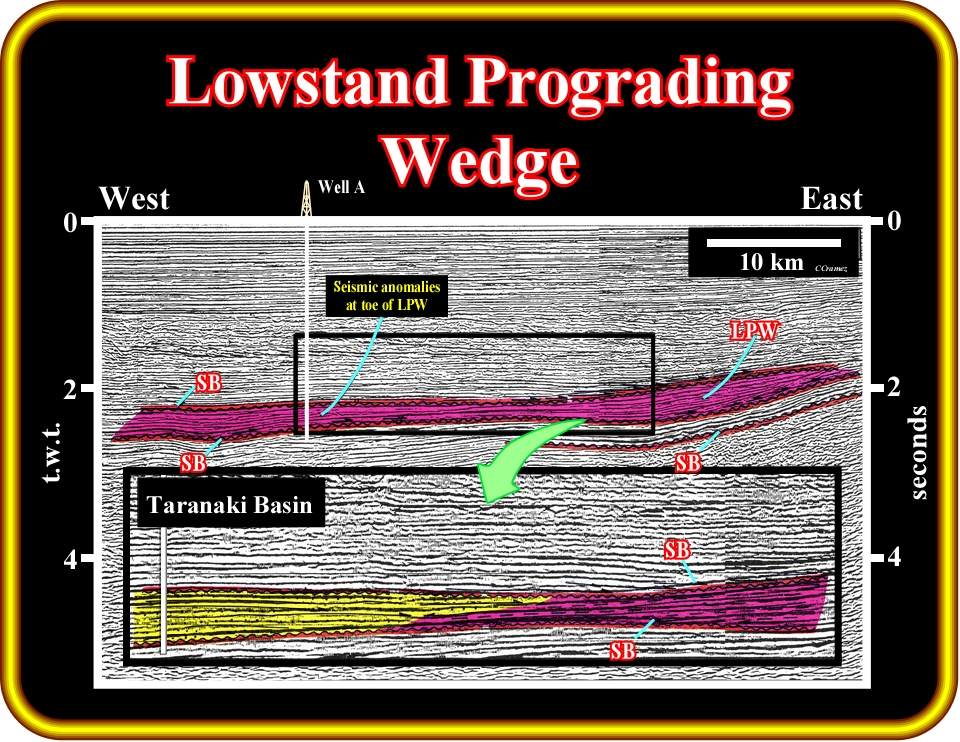
Plate 432- A final tentative interpretation of the previous line suggests that well #A recognized a lowstand prograding wedge, limited by two sequence-cycle boundaries. As depicted on the tentative interpretation of the close-up, a stacking of sedimentary anomalies is clearly visible at the toe of the progradations. Such anomalies were interpreted as shingled turbidites and were corroborated by the results of the well as illustrated in the next plate.
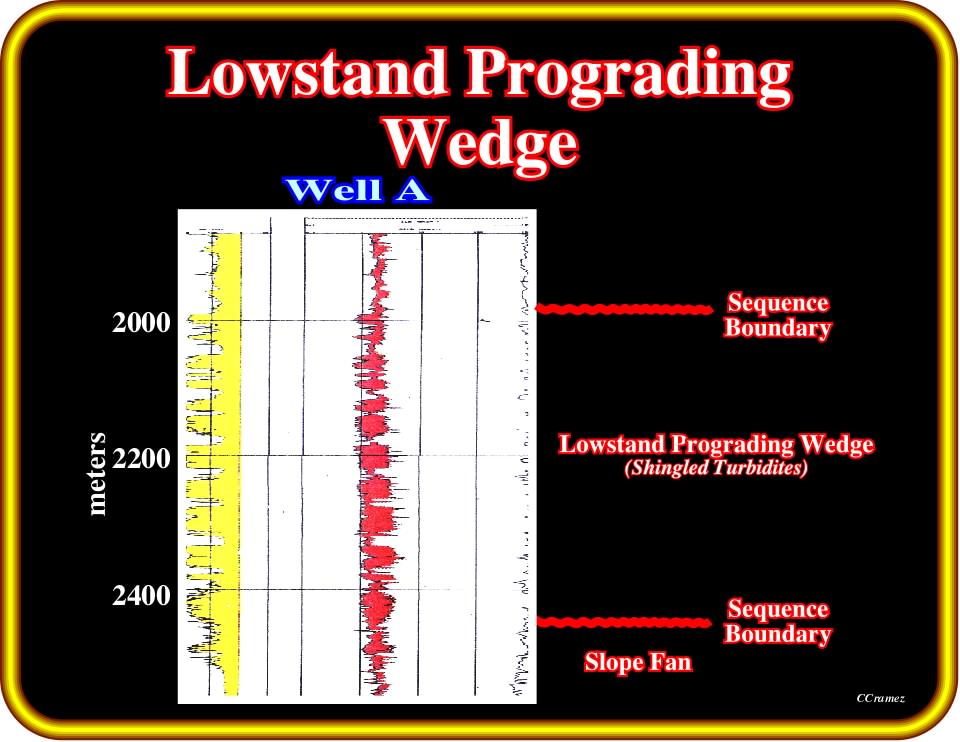
Plate 433 - The log pattern of well #A, particularly of the gamma ray, is characteristic of shingled turbidites, i.e., of deposits found at the toe of low-stand progradations associated with major gravity slumpings induced mainly with instabilities of the lowstand shelf breaks. The facies of these turbidite deposits is strongly dependent of the lithology of the shelfal deposits.
Exercises

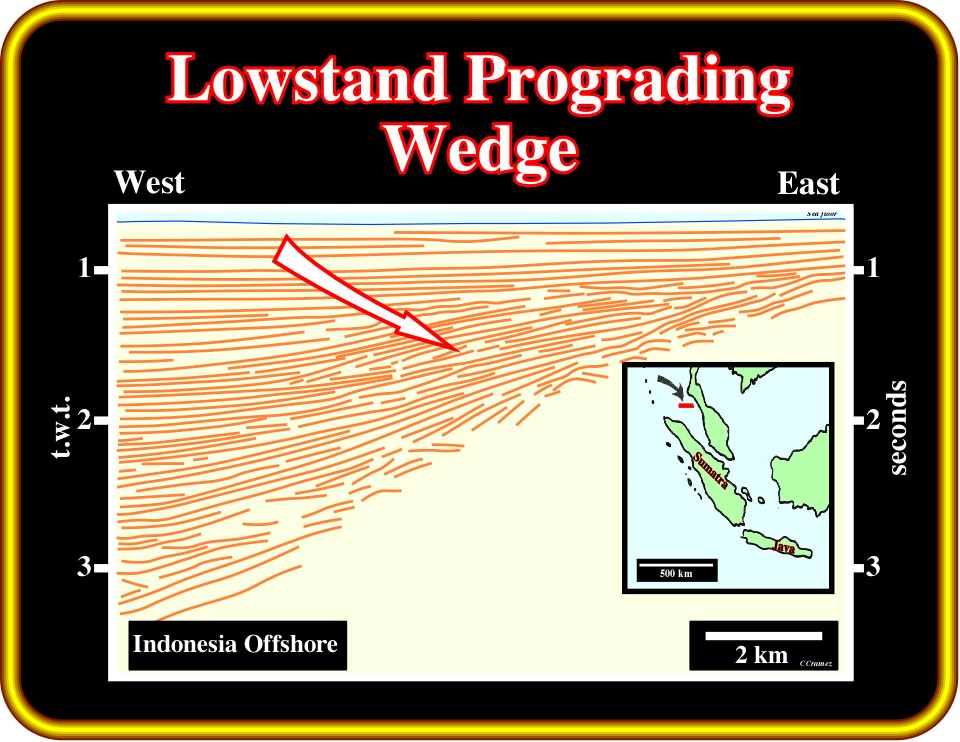
Plate 434- Progradational systems tracts are well visible on this first step tentative interpretation of seismic line from offshore Indonesia. Are they associated with lowstand or highstand geological situations? Support your answer with a sequential interpretation. Then propose two potential hydrocarbon traps, and explain your choice.

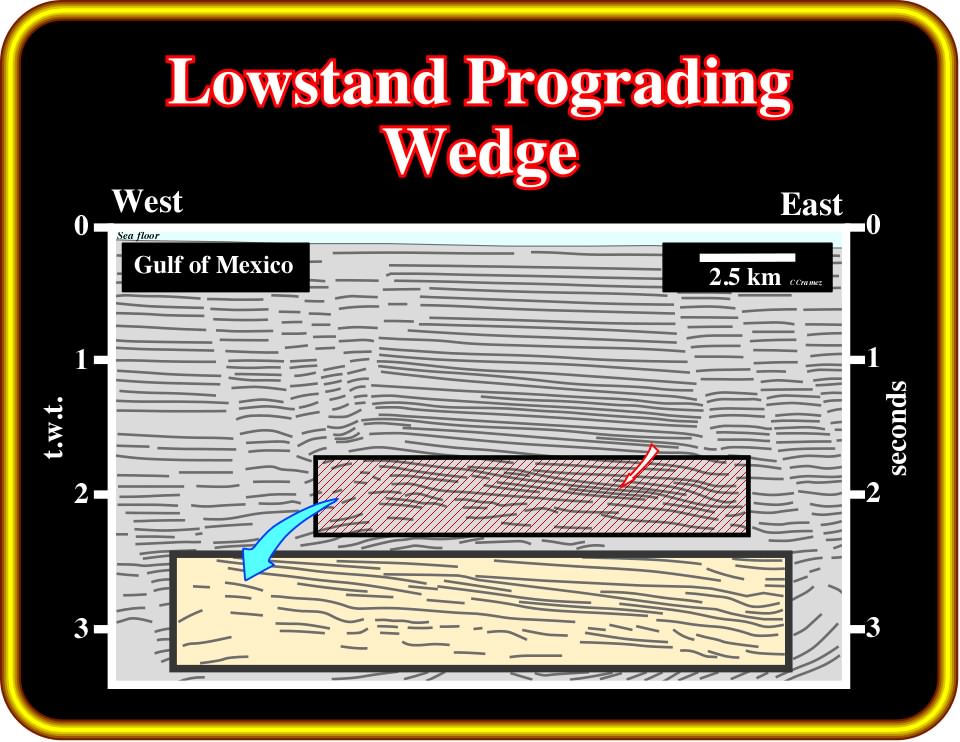
Plate 435- On this first step tentative interpretation of a seismic line, from the Gulf of Mexico, at a certain time, one can easily recognize a lowstand geological ramp setting. Pick the unconformity above which such a setting was developed. Then, on the enlarged close-up, identify the overlying sequence-cycles and propose the more likely systems tracts.
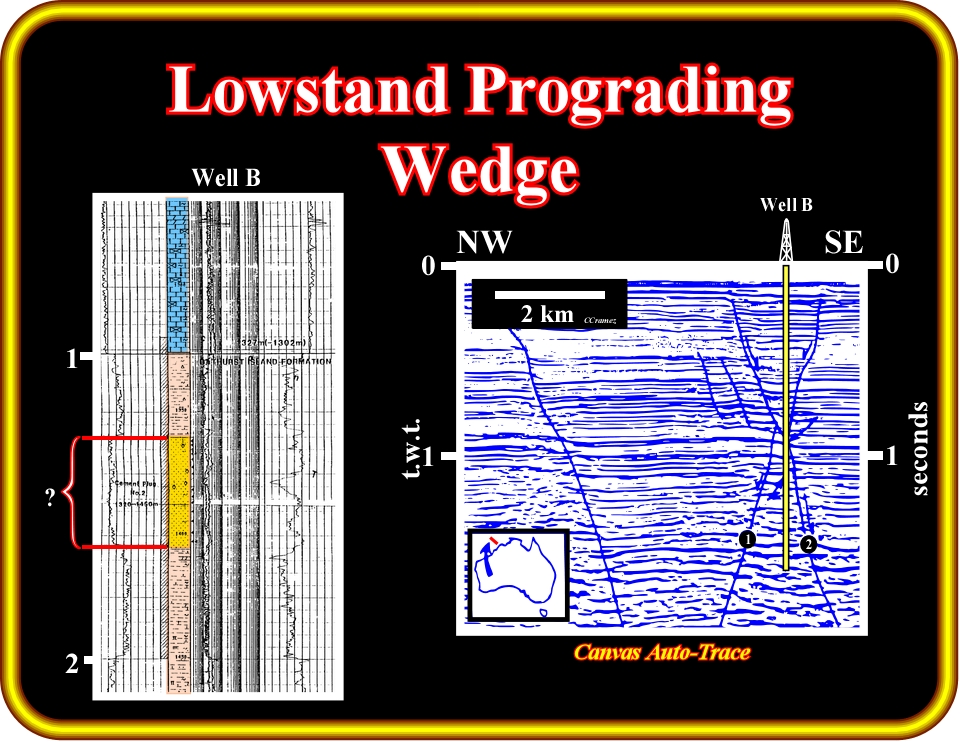
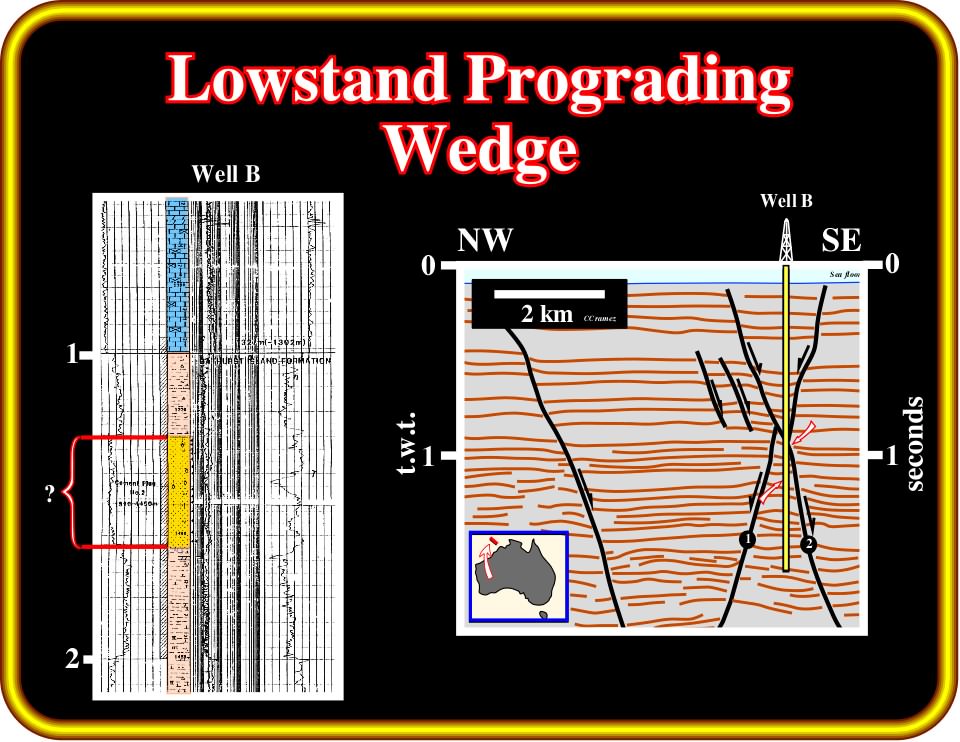
Plate 436- The well B encountered a thick sandy reservoir in a seismic interval around 1.0 seconds (t.w.t.). What was the depositional environment in which these sands were deposited? (see Plate 458). The presence of graben overlying, at the same vertical, a horst is one of the characteristic of the X faults (1,2). Propose a final tentative interpretation of the first step tentative interpretation proposed above.
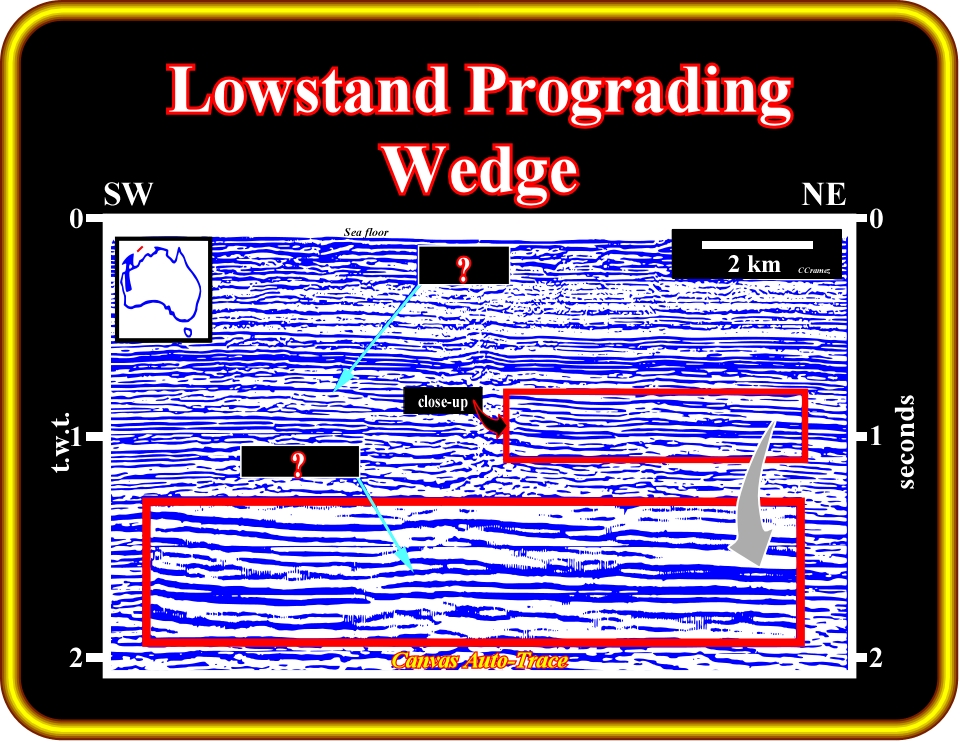

Plate 437- The original line of this first step tentative interpretation is perpendicular to the previous one (Plate 457). It depicts the sandstones recognized in well B, which are associated with subtle seismic anomalies. Locate them and individualize the sequence cycle as well as the associated systems tract. What is the more likely paleowater depth of these sands?